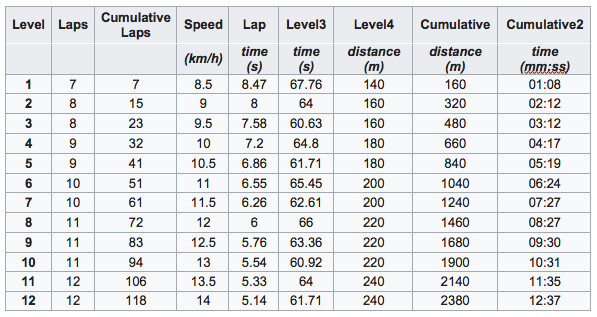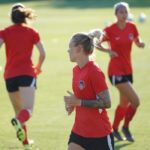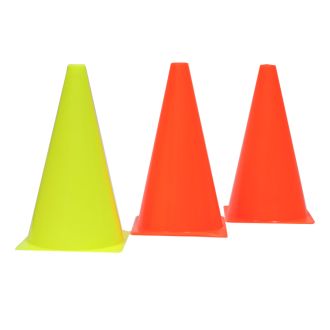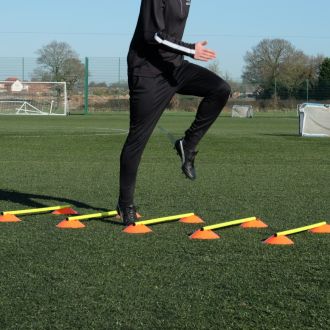Improving Team Fitness: The Bleep Test
The Bleep Test
The Bleep Test, also known as the beep or multistage fitness test, is a method of testing the fitness and aerobic capacity (stamina) of an athlete. It is used by military and police organisations worldwide. From a football point of view, it is an extremely useful tool to determine the fitness of a player.What is The Bleep Test?
The Bleep Test is a tool used by coaches to estimate a player’s maximum athletic aerobic capacity. This capacity is often referred to as VO2. VO2 is the maximum rate of oxygen consumption measured during incremental exercise; that is, exercise of increasing intensity. Footballers, as all athletes, need to have a high level of VO2 as this is a good indication of stamina The test itself involves running between 2 cones (or other type of marker) that are 20 metres apart. The signal to run from one cone to another is set by an audio recording. The audio recording is available via CDs, mobile phone apps, and even YouTube videos, and more information on where these can be found is below. The recording itself will make a bleep or beep noise to indicate the start of the next run and the idea is for the players to run between the cones before the next bleep goes off. Making it from one cone to the other is called a lap. In the Bleep Test, there are seven laps in level 1. As the test proceeds, the interval between each bleep/lap reduces as you go up the levels. The number of laps also increases as you go up the levels. Anyone who has done a Bleep Test will tell you that it is an extremely tough test to do; both physically and mentally. And anyone who has done the Bleep Test has their own story about it!
Making it from one cone to the other is called a lap. In the Bleep Test, there are seven laps in level 1. As the test proceeds, the interval between each bleep/lap reduces as you go up the levels. The number of laps also increases as you go up the levels. Anyone who has done a Bleep Test will tell you that it is an extremely tough test to do; both physically and mentally. And anyone who has done the Bleep Test has their own story about it!
Setup
The beauty of the Bleep Test is that it is so simple, and inexpensive, to setup. You just need the following:- Your players
- An area that has markers 20 metres apart. These markers could be cones, a white chalk line, or anything really!
- A Bleep Test app or YouTube video to produce the Bleep Test audio
- A sheet to record each player score
 The next time the audio bleeps, the players move back to the first cone. This run is Level 1, Lap 2.
The next time the audio bleeps, the players move back to the first cone. This run is Level 1, Lap 2.
 If the players are still moving between cones after Level 1, Lap 7 then they are now on Level 2. Instead of 7 laps, level 2 has 8 and the time between the bleeps decreases!
If the players are still moving between cones after Level 1, Lap 7 then they are now on Level 2. Instead of 7 laps, level 2 has 8 and the time between the bleeps decreases!
Here is the full list of levels, laps, times and distances:
 As you can see from the table, the speed required for later levels is extremely quick and the rest time decreases to virtually zero (depending on your speed). This constant shuttling back and forth works on turning and being efficient with your turns, which is also extremely important in football. If the turns are too wide, then valuable seconds are eaten up.
If a player cannot make it to the cone before the bleep goes off, then they are finished, and the test is over for them. The level and lap the player gets to is recorded and can be used for future comparison.
Here is a table of the minimum score required to gain entry to various organisations:
As you can see from the table, the speed required for later levels is extremely quick and the rest time decreases to virtually zero (depending on your speed). This constant shuttling back and forth works on turning and being efficient with your turns, which is also extremely important in football. If the turns are too wide, then valuable seconds are eaten up.
If a player cannot make it to the cone before the bleep goes off, then they are finished, and the test is over for them. The level and lap the player gets to is recorded and can be used for future comparison.
Here is a table of the minimum score required to gain entry to various organisations:
| Organisation | Minimum Level Required |
| British Army | Level 8, Lap 7 |
| Royal Air Force | Level 9. Lap 10 (male) | Level 7, Lap 2 (female) |
| Royal Marines | Level 10, Lap 5 |
| Police Scotland | Level 5, Lap 4 |
| Police England and Wales | Level 5, Lap 4 |




